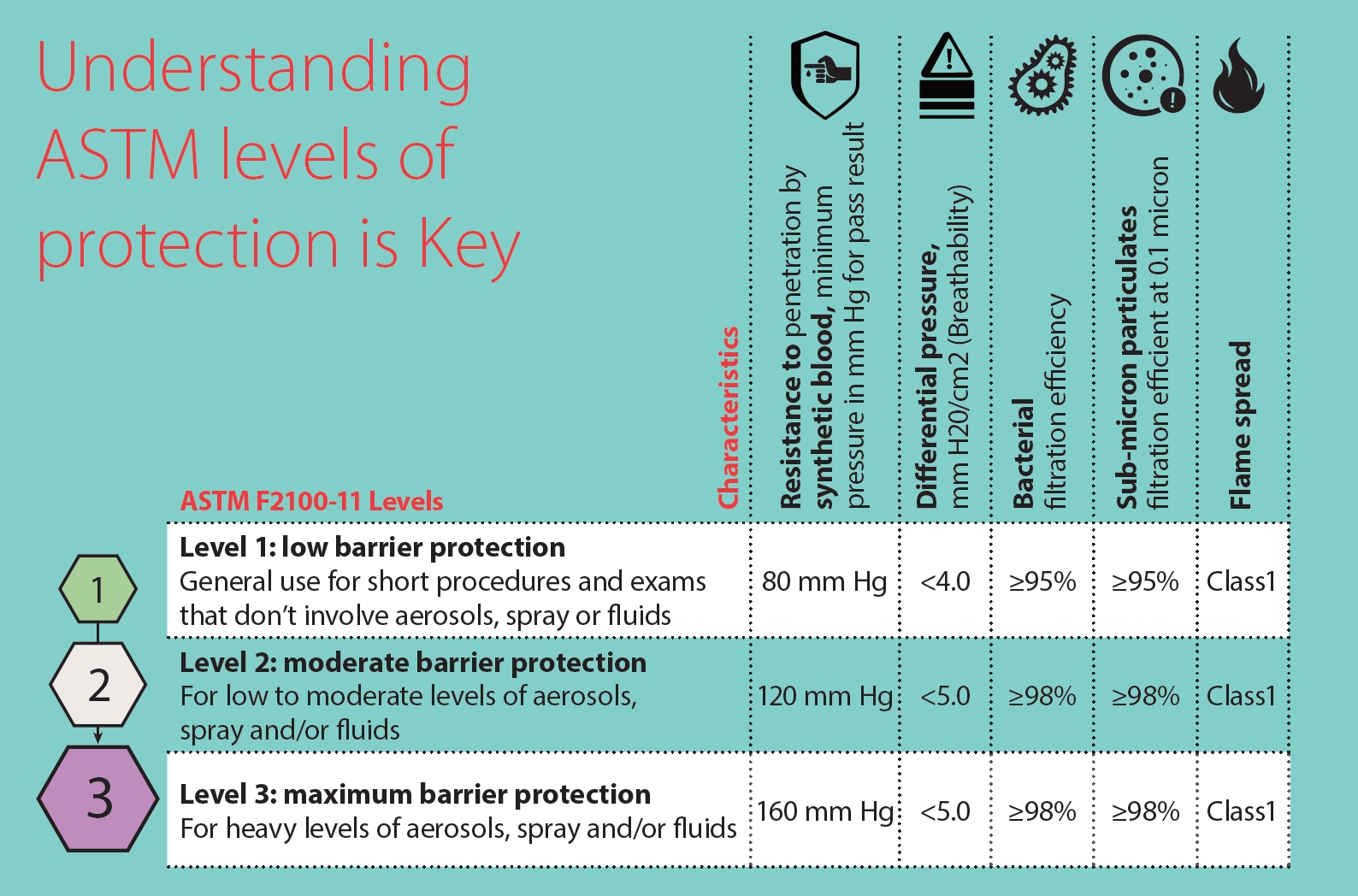Categorised under:
PPE
>
Face masks
>
Important Background Information
From Which Medical Device
PPE has never been as important to health care professionals as it is now in the era of novel Corona viruses.
Most of us had never heard of PPE or FFP3 masks a few months ago, but now ours and our patient's lives may depend on the correct choice. This choice of equipment is very much dependent on local availability and the vagaries of national supply or indeed lack of supply. This means that as clinciains we very much have to use what we are given. I believe that we should be using the correct equipment and to do that you need to know what types of equipment are available ie specifically what class/type of mask you are being given. You cannot always rely on the supply chain staff or people ordering equipment to get it right! You cannot even rely on your government to order the best equipment.
Face Mask Standards and what they mean:
The American Standard: ASTM (American Society For Testing and Materials), Levels 1-3
The European Standard (EN14683) for fluid resistant surgical masks type 2R
The ASTM standards:
Level 1 masks are low barrier and not suitable for operating theatre use
level 2 masks are moderate barrier
Level 3 masks are considered high barrier and used for procedures with a higher amount of aerosol/spray exposure, these however are not sufficient for aerosol generating procedures in COVID/supected COVID patients.
This excellent diagram from Cardinal health illustrates the different features very well:

These fluid resistant surgical masks are classes as type 2R and are equivalent to ASTM level 2 masks
Type 2 EN14684 masks are appropriate for situations where exposure to blood/body fluids from the patient or work environment is not a risk for the healthcare worker, they are intended to prevent large particles expelled by the wearer from reaching the patient/work environment.
ASTM Level 2/3 masks and EN14683 type 2R masks are suitable for operating theatre use and will provide some protection from splash risk. They also minimise contamination from the wearer to the patient/environment. They are not sufficient for protection from COVID-19 and other viruses.
If there is a risk of infection from a patient due to close/prolonged contact or when performing an aerosol generating procedure then an N95 (or better, US standard) of FFP2/FFP3 filtering face piece should be worn. These are otherwise known as respirators and contain a filter suitable to trap small particles. There should be an air tight seal around the edges of the mask.
All operators should be fit tested with the mask they are supplied with to ensure the seal is adequate and a fit check should be performed on each occasion a respirator mask is worn. Different operators may suit different types of mask and different makes may need to be tried to obtain a correct fit.
Respirator Masks:
US standard N95 and European standard FFP2/3 are the most commonly used masks/respirators.
The following is from an excellent detailed discussion and explanation of face masks by Dr John Campbell, The full discussion can be found HERE and I would highly recommend you read it:
| Standard | Filter capacity, x% of partciles 0.3 microns or larger |
|---|---|
| FFP1 and P1 | at least 80% |
| FFP2 and P2 | at least 94% |
| N95 | at least 95% |
| N99 and FFP3 | at least 99% |
| P3 | at least 99.95% |
| N100 | at least 99.97% |
Respirator masks are valved and non valved.
Valved masks allow easier exhalation and are therefore more comfortable but do not protect the patient.
Non valved masks filter in inhalation and exhalation and protect the patient and the wearer.
There is much debate about what constitutes an aerosol generating procedure or AGP where infection risk to the operator is greatest. The following is a list of such procedures (from Public Health England) but is by no means comprehensive:
In addition we would consider the following AGPs more specific to Intervcentional Radiology:
When in doubt operators should make their own risk assessments in individual cases.
Your opinion matters to others - rate this device or add a comment
There are no currently similar devices - Click here to suggest a device

Did you know you can Register for FREE with this website?
Registration gives you full access to all of the features of WhichMedicalDevice. Find out more ...
WhichMedicalDevice is a FREE resource created by clinicians for clinicians.
Registration is free and gives you unlimited access to all of the content and features of this website.
Find out more...Registration is free and gives you unlimited access to all of the content and features of Which Medical Device. Find out more...
Which Medical Device is a community of clinicians sharing knowledge and experience of the devices and procedures we use on a daily basis. We ask that our members register with us so that we can maintain the unbiased and independent nature of our content. Registration is quick and free.
We do not make your details available to any third parties nor do we send unsolicited emails to our members. You can read our Privacy Policy here.